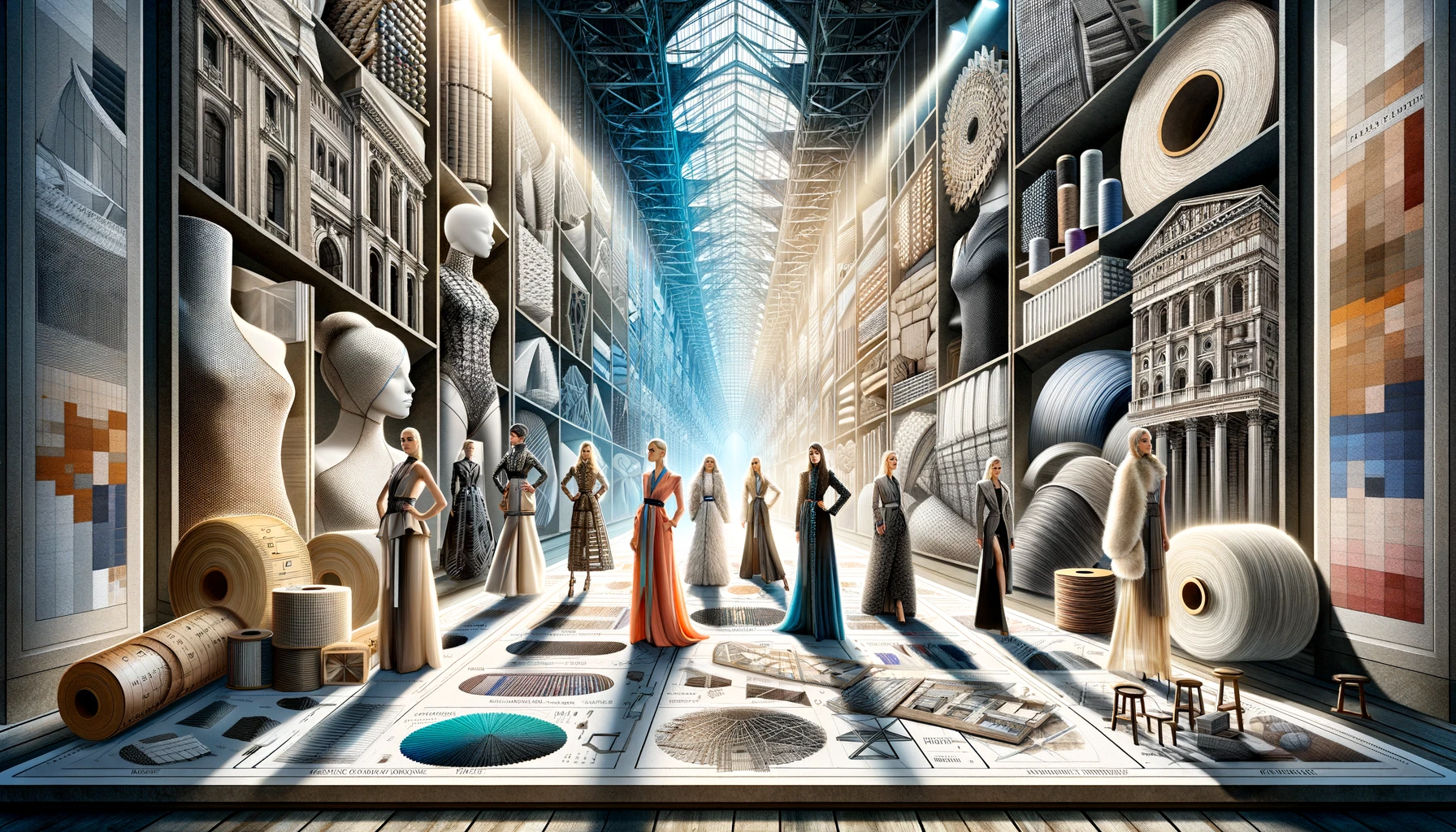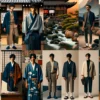Unraveling the Fabric of Creativity: Exploring the World of Textile in Fashion and Architecture
I. What is Textile?
In the world of fashion and architecture, the term “Textile” holds a significant and well-established place. However, for those who are not deeply immersed in these industries, the concept of Textile might seem a bit elusive. In this article, we will delve into the world of Textile to understand what it encompasses, its distinctive characteristics, and its widespread applications in the realm of fashion.

II. Defining Textile
Textile, in its essence, is a comprehensive term that encapsulates the art of weaving, comprising a plethora of facets within the realms of both traditional craftsmanship and modern industrial art. At its core, Textile involves the creation of fabrics and materials through various weaving processes. These processes can range from the intricate and delicate handwork of artisans to the highly automated and efficient techniques employed in industrial settings.
When we break down the term “Textile,” it can be understood as “a cloth made by hand or machine.” This definition highlights that Textile is essentially a type of material woven from fibers, and this weaving can be achieved either manually through skilled craftsmanship or through the use of advanced machinery in the industrial sector.
III. The Diverse World of Textile
The textile industry encompasses a wide spectrum of products and materials, each with its unique properties and purposes. From the finely woven fabrics that adorn haute couture garments to the robust and durable materials used in architectural and interior design, Textile finds its place in an array of applications.
At its core, Textile is about the interlacing of fibers to create a fabric. This can involve a variety of techniques, including knitting, weaving, and felting. The choice of fibers, weaving patterns, and finishing processes all contribute to the distinct characteristics of the final textile product.
IV. Exploring Additional Concepts Related to Textile
In our journey through the world of textile, we’ve already uncovered the multifaceted nature of this art form, which extends well beyond the boundaries of fashion and architecture. There are several other intriguing concepts closely tied to textile that warrant exploration:
1. Textile Art:
- A Profound Artistic Expression: Textile Art, often referred to as the pinnacle of textile creativity, represents a profound artistic expression. It blurs the line between fashion and fine art, turning fabric into a canvas for imagination. Artists and artisans alike use various textile techniques to craft pieces that transcend mere utility and become captivating visual narratives.
- Diverse Mediums: Textile Art encompasses a wide range of mediums, from traditional hand embroidery and hand-dyeing to innovative digital printing and mixed media creations. Each piece tells a unique story, often reflecting cultural heritage, personal experiences, or social commentary.
- Collector’s Items: For collectors and enthusiasts, Textile Art holds a special allure. These meticulously crafted textile artworks often gain value over time, becoming coveted collector’s items. Some renowned textile artists have achieved celebrity status in the art world.

2. Textile Design:
- A Fusion of Creativity and Functionality: Textile Design marries creativity with functionality. It involves the intricate process of designing patterns, motifs, and color schemes for textiles, ensuring that the resulting fabric serves both aesthetic and practical purposes. Designers carefully consider how patterns will repeat, how colors will interact, and how the textile will drape and feel.
- Applications Beyond Fashion: While Textile Design is widely recognized in the fashion industry, its reach extends into various other domains. In interior design, for example, textile designers play a pivotal role in creating visually captivating and comfortable living spaces. Upholstery fabrics, curtains, and rugs are all products of textile design.
- Global Influence: Textile Design is a dynamic field that draws inspiration from cultures around the world. Patterns and motifs may be influenced by traditional textile artistry from regions like India, Africa, or the Middle East, resulting in a rich tapestry of global design influences.

3. Textile Innovation:
- Technological Advancements: The world of textile is not immune to technological innovation. Advanced machinery and materials have revolutionized the industry, making production faster, more efficient, and environmentally friendly. Sustainable textiles, created from recycled or organic fibers, are gaining prominence as eco-conscious consumers seek greener alternatives.
- Smart Textiles: Another exciting development is the emergence of smart textiles. These fabrics are embedded with technology that can monitor vital signs, provide insulation, or even change color in response to environmental conditions. Smart textiles hold immense potential in healthcare, sports, and fashion industries.
- Collaborations and Cross-Pollination: Textile innovation often thrives through cross-disciplinary collaborations. Scientists, engineers, and designers come together to push the boundaries of what textiles can achieve, leading to remarkable breakthroughs.
V. Exploring the Characteristics and Applications of Textile
Textile, a versatile and ubiquitous material, holds a unique place in our lives far beyond the realm of fashion. Its utility spans various domains, including interior design, textile art, furnishings, art exhibitions, and even service establishments and stores. Let’s delve deeper into the characteristics, advantages, disadvantages, and distinctions of Textile:

Advantages of Textile:
- Soft and Breathable: One of the standout features of textile is its soft and gentle feel against the skin. This characteristic makes it a preferred choice, particularly in clothing and garments. Textile fabrics allow air circulation, ensuring comfort even during extended wear.
- Stretchability and Resilience: Textile materials exhibit a notable degree of stretchability while maintaining their shape. This flexibility is beneficial in clothing design, as it allows for ease of movement without compromising the garment’s integrity.
- Effective Thermal Insulation: Textile excels at providing thermal insulation. It traps warmth, making it ideal for crafting cozy winter attire like sweaters, scarves, socks, and cold-weather bedding such as duvets and pillows.
- Wrinkle Resistance: Textile fabrics are renowned for their resistance to wrinkles and creases. After washing and regular use, they tend to maintain a smooth appearance, making them convenient and low-maintenance choices for everyday wear.
- Skin-Friendly: For those with sensitive skin, textile materials are often the preferred option. They are less likely to cause irritation or allergic reactions, contributing to a comfortable and irritation-free experience.
Disadvantages of Textile:
- Edge Fraying: Over time, textile fabrics can experience fraying along their edges, particularly in older or well-worn items. This can affect the fabric’s visual appeal.
- Susceptibility to Snags: Textile materials are relatively susceptible to snagging on sharp objects. Accidental encounters with sharp edges or objects can result in small tears or pulls in the fabric.
- Potential for Itching: Certain types of textile fibers, especially those with metallic elements or finishes, may induce itching or discomfort when in direct contact with the skin. This can make them less suitable for extended use.
VI. Distinguishing Textile from Fabric and Cloth:
1. Textile vs. Fabric:
- Fabric Application: Fabric typically denotes textiles that have undergone various processing stages such as weaving, knitting, or crocheting before being used. It is predominantly associated with clothing production.
- Textile Versatility: In contrast, textile refers to textiles that are not yet fully processed or have not undergone the final stages of preparation before use. This means that textile materials can be applied in a broader range of contexts beyond fabric production.

Fabric
2. Textile vs. Cloth:
- Cloth as Garments: “Cloth” in English is primarily associated with clothing or garments. However, it can also specify a particular type of woven fabric used in clothing. Cloth can be crafted from materials like wool or cotton, often with limited sourcing, leading to higher costs. This sets cloth apart from textile in a significant manner.
VII. Applications of Textile in Fashion:
In the world of fashion, Textile-related terms such as textile fabric or textile art serve as boundless sources of inspiration for designers. The creative potential of textile materials knows no bounds. With a vibrant palette of colors, innovative patterns, and striking designs, fashion products crafted from textile fabrics are not merely garments; they are considered artistic masterpieces.
Fashion enthusiasts and connoisseurs appreciate these textile-based creations for their exceptional aesthetic appeal. They symbolize the harmonious fusion of cutting-edge techniques from the modern fashion industry with the timeless craftsmanship of handwoven textiles. Over time, fashion styles born from textile materials have evolved into distinct movements, attracting fashionistas and leaving an indelible mark on the world of style and design.




VIII. The Intersection of Textile in Architecture
While fashion is one of the most well-known arenas for Textile, its influence extends far beyond clothing. Textile also plays a pivotal role in architecture and interior design. Textile materials are used for curtains, upholstery, carpets, and wall coverings, contributing to the aesthetics and functionality of living spaces.
Architects and interior designers harness the versatility of Textile to achieve specific design objectives. Fabrics can be chosen for their acoustic properties, light-filtering abilities, and thermal insulation qualities. Moreover, Textile materials can be used to create visually striking and dynamic interiors that evoke a sense of style and sophistication.


